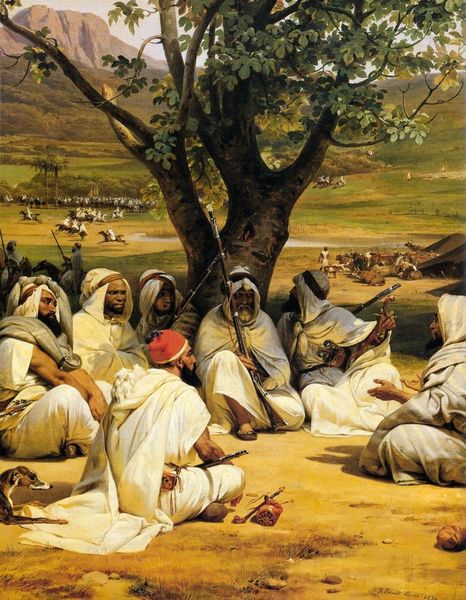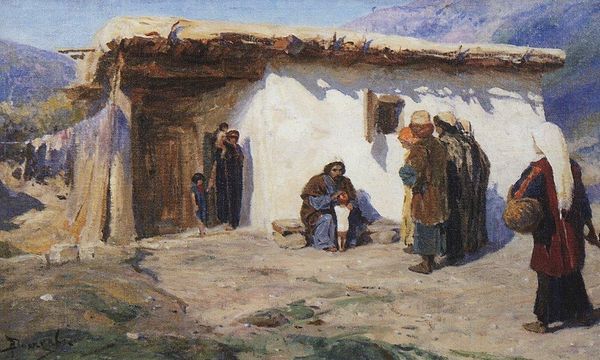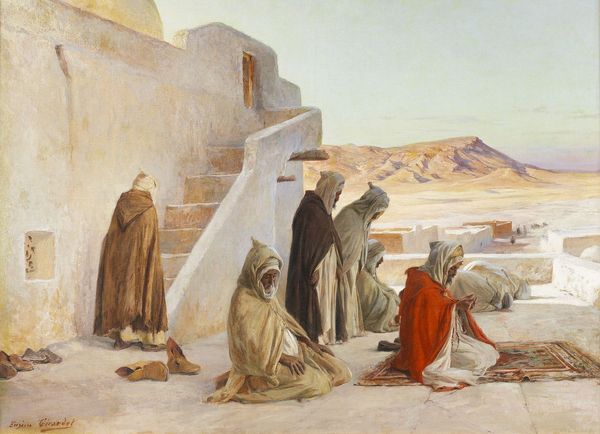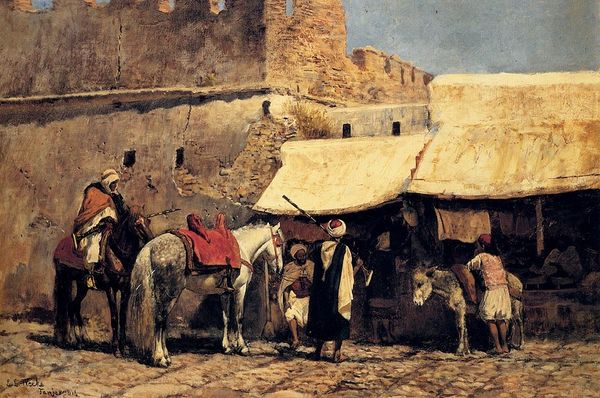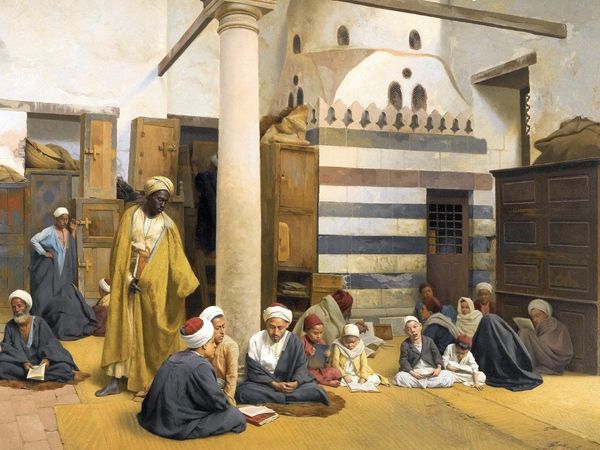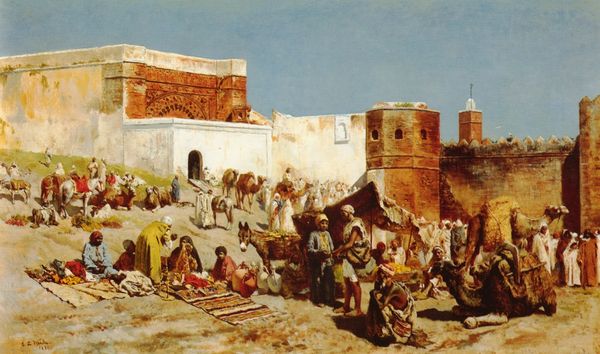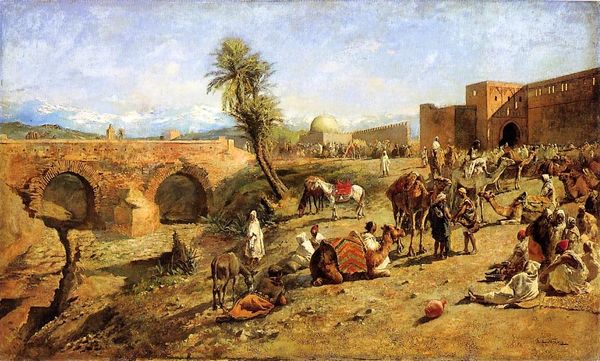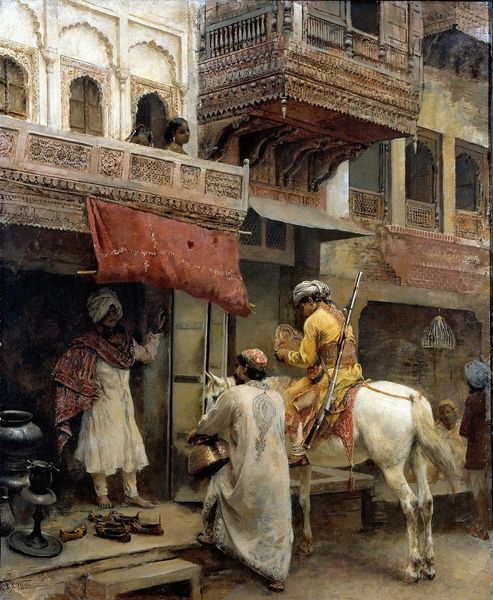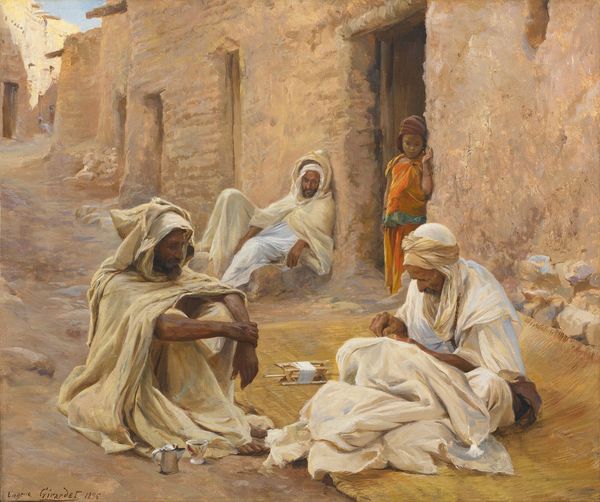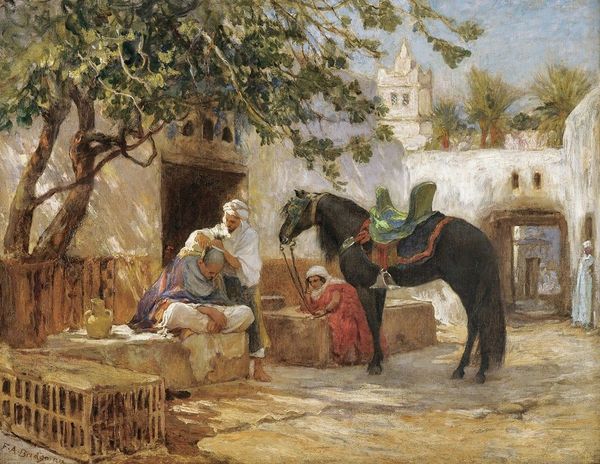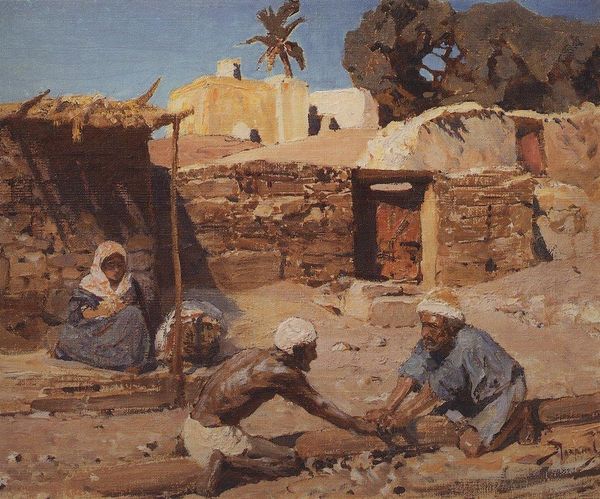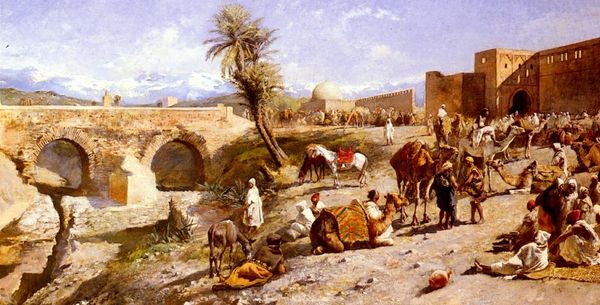
painting, plein-air, oil-paint, architecture
#
painting
#
impressionism
#
plein-air
#
oil-paint
#
landscape
#
oil painting
#
arch
#
orientalism
#
painting painterly
#
genre-painting
#
architecture
Dimensions: 70 x 100 cm
Copyright: Public domain
Editor: Here we have Theo van Rysselberghe’s “Moroccan Market,” painted in 1883 using oil. There's such a bustling yet calm atmosphere conveyed in this piece. I'm particularly struck by the way light dances across the architecture. What is your take on it? Curator: I see this as a pivotal work within the Orientalist movement. It's not simply a landscape; it's a social tableau rife with cultural implications. Rysselberghe, like many European artists of the time, was captivated by North Africa. But through today’s critical lens, we must consider this artistic fascination and examine whose gaze is privileged here. How does Rysselberghe's representation potentially reinforce colonial power dynamics? Editor: That's an interesting perspective, I never considered the inherent power dynamics at play. Are there other visual cues that point toward this interpretation? Curator: Absolutely. Consider the framing, the carefully selected details, the implied stories within the marketplace setting. The architecture looms, while the people are rendered as generalized figures, stripped of individual narratives. Whose stories are we missing because of this generalization, and how can this absence perpetuate stereotypes about the "other"? Editor: So it's less about the visual beauty and more about the critical engagement with its historical and social context? Curator: Precisely. It’s not just about appreciating brushstrokes; it’s about questioning the underlying power structures that enabled such portrayals. This piece prompts us to think about the gaze, representation, and the complex relationship between the colonizer and the colonized, even within the seemingly innocent depiction of a marketplace. Editor: This has certainly given me a new appreciation for looking at art beyond just aesthetics. It's crucial to consider the context. Curator: Indeed. It is about using art to critically engage with the social narratives. The artist has frozen a moment in time, but as observers we need to thaw that moment and explore it beyond face value.
Comments
No comments
Be the first to comment and join the conversation on the ultimate creative platform.
